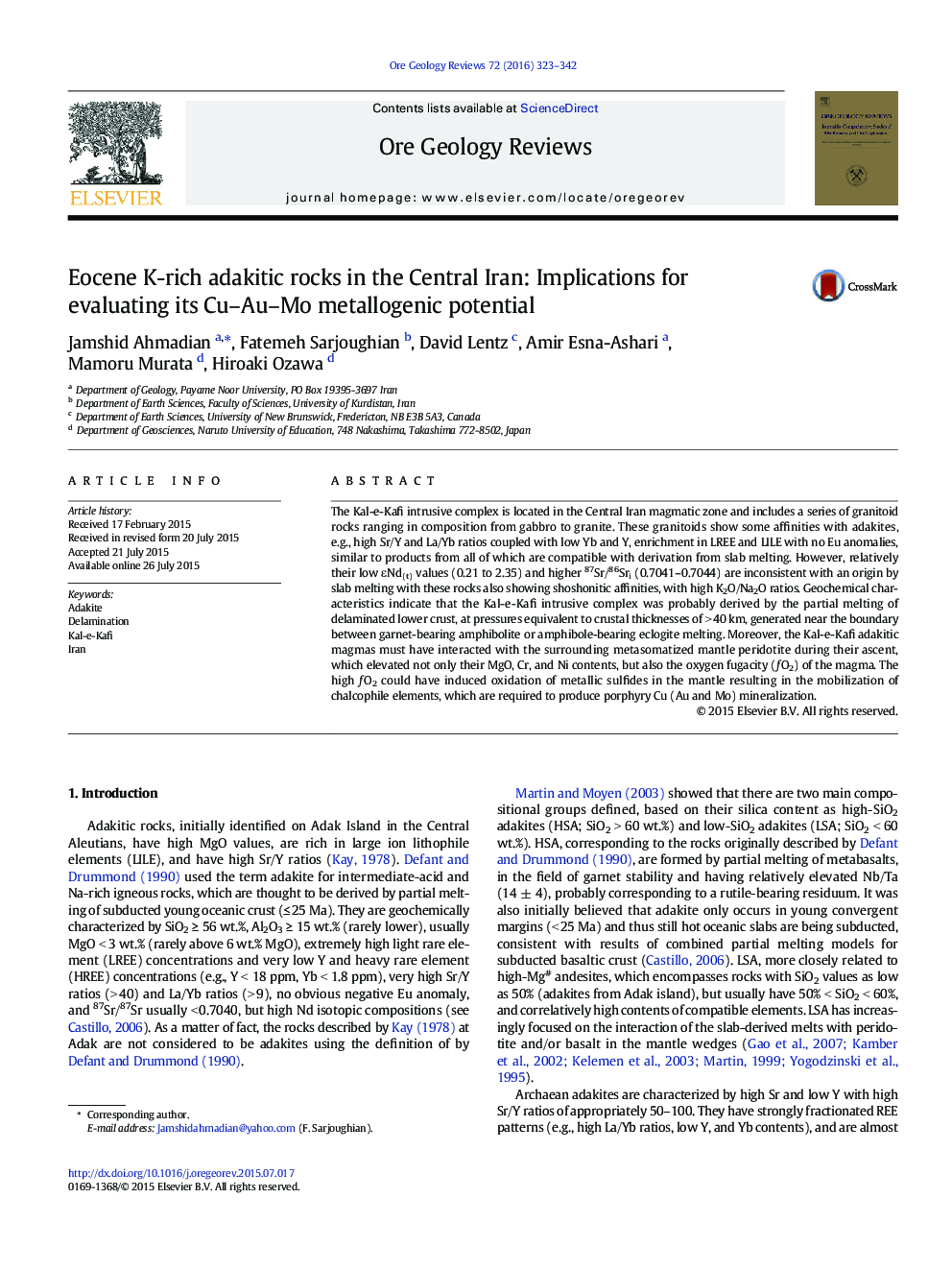| Article ID | Journal | Published Year | Pages | File Type |
|---|---|---|---|---|
| 6435742 | Ore Geology Reviews | 2016 | 20 Pages |
â¢Report of adakitic magmatism for the first time in this areaâ¢Providing valuable information on the geodynamic history of the areaâ¢It has been recognized that adakites are often associated with Cu-Au mineralization
The Kal-e-Kafi intrusive complex is located in the Central Iran magmatic zone and includes a series of granitoid rocks ranging in composition from gabbro to granite. These granitoids show some affinities with adakites, e.g., high Sr/Y and La/Yb ratios coupled with low Yb and Y, enrichment in LREE and LILE with no Eu anomalies, similar to products from all of which are compatible with derivation from slab melting. However, relatively their low εNd(t) values (0.21 to 2.35) and higher 87Sr/86Sri (0.7041-0.7044) are inconsistent with an origin by slab melting with these rocks also showing shoshonitic affinities, with high K2O/Na2O ratios. Geochemical characteristics indicate that the Kal-e-Kafi intrusive complex was probably derived by the partial melting of delaminated lower crust, at pressures equivalent to crustal thicknesses of > 40 km, generated near the boundary between garnet-bearing amphibolite or amphibole-bearing eclogite melting. Moreover, the Kal-e-Kafi adakitic magmas must have interacted with the surrounding metasomatized mantle peridotite during their ascent, which elevated not only their MgO, Cr, and Ni contents, but also the oxygen fugacity (ÆO2) of the magma. The high ÆO2 could have induced oxidation of metallic sulfides in the mantle resulting in the mobilization of chalcophile elements, which are required to produce porphyry Cu (Au and Mo) mineralization.
